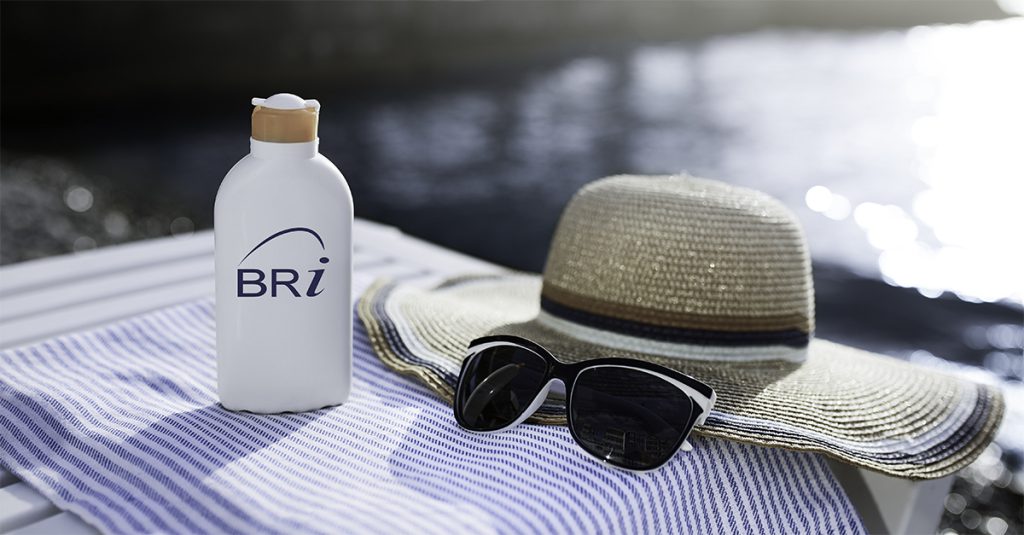Beauty is only skin deep… but your skin is seven layers deep, so if you’re on a mission to maintain your beauty and health, here are some considerations centering on sunscreen.
What happens to your skin when you don’t use sunscreen?
Most of us know what happens when we do apply sunscreen: it prevents sunburns and early aging. (As an aside, “early aging” refers to the premature appearance of dark spots/hyperpigmentation, wrinkles, and fine lines that indicate damage to skin cells. Aging skin is a natural phenomenon that occurs over decades and should not be a cause for concern).
But what happens when we don’t apply sunscreen?
The biggest risk skin is exposed to without sunscreen is radiation.
What is radiation?
There are two types of radiation that are most common when it comes to sun damage: UVA and UVB.
The “UV” stands for “ultraviolet” which means the light is not actually visible. So, when it’s cloudy and you see no sunshine, you still need sunscreen to block the invisible ultraviolet light. Otherwise, it will have a direct (negative) impact on your skin.
According to the Skin Cancer Foundation, ultraviolet A is associated with skin aging. Ultraviolet B is associated with skin burning.
Watch this 3-minute video to see how UVA and UVB rays show up on your skin.
Results of radiation:
- Hyperpigmentation and dark spots.
- Skin cancer. According to the Skin Cancer Foundation, there were over 5.4 million nonmelanoma cases of skin cancer in over 3.3 million Americans last year.
- Early aging. Wrinkles and fine lines are caused by your own collagen being broken down by sun exposure.
So how can you protect your skin from the effects of radiation?
How to protect and restore your skin
Protect: Broad spectrum sunscreen. You can buy different types of sunscreens for your body, including face sunscreens that won’t clog pores and body sunscreen for full protection.
Look for “broad spectrum” SPF. This (usually) means that the sunscreen prevents damage from both UVA and UVB rays, which have different wavelengths.
Pay with your FSA or HSA.
You may be among the 43% of people that didn’t know funds from an HSA or FSA could be used to purchase sunscreen.
Sunscreen is considered an eligible expense under pre-tax health accounts as long as the sunscreen is SPF 15 or higher and offers broad-spectrum protection.
Find your perfect sunscreen. (Buying through an HSA? Shop here.)
Restore: Fill up on antioxidants. Maybe you’ve heard that antioxidants are good for you. To understand the role of an antioxidant, let’s go over what oxidation is.
At a chemical level, oxidation occurs when there is a loss of electrons. This chemical breakdown happens at a cellular level in your body. On the surface, it can show up as dark spots or browning, like an apple slice left out on the counter.
The dark coloration you see on the apple is due to oxidation. Antioxidants bond to free radicals (produced by radiation) to prevent the loss of electrons, reducing oxidation and dark spots.
Antioxidants can be an ingredient in sunscreen or applied separately either through a serum or by eating certain foods. If you want a visual of the benefits of antioxidants, here is what an apple looks like when an antioxidant in the form of Vitamin C serum is applied.
Ready to ride off into the sunset?
But what about the positive aspects of getting enough sun, like Vitamin D?
You can balance your risk of skin cancer with your body’s need for Vitamin D. Dr. Stern, quoted in Harvard Health, suggests that finding that balance lies in adequate protective measures that don’t go overboard.
His recommendation? Use “a sunscreen with a sun protection factor (SPF) of at least 15 when you’re outside for an extended period and wearing a hat and shirt around midday. So, when summer’s here, get outside and enjoy it!”



